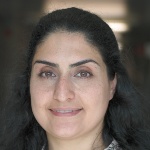Research in Project Area C
Project Area C focuses on methodological aspects of describing processes within multi-component, multi-phase porous media that lead to property changes within the solid phase. This project area investigates processes that cause a change of the solid due to biological, chemical or mechanical interactions at the surface of the solid, i.e. at the interface between two different components/phases. The targeted biological, chemical or mechanical processes can, for example, comprise material injection, swelling, precipitation, dissolution, or hardening. As a result, the surface structure of the porous matrix and/or the morphology of the pores is altered. The processes that lead to altered structures are typically specific to the given application context.
Projects
C01: A Lattice-Boltzmann investigation of two-phase electrolyte flow in porous structures with morphology alterations and tunable interfacial wetting behaviour
We investigate the flow structure and the porosity-permeability relationship of porous media that undergo morphology modifications due to evaporation or microbially induced calcite precipitation, as well as wettability modifications of the solid-fluid interface due to fluid pH, composition, or salt con¬centration changes. We develop simulation methods based on coupled multi-phase and multi-component Lattice-Boltzmann and solute molecular dynamics simulations, capable of reproducing these processes in detail on the pore scale, yielding results to be used to improve existing continuum models.
C02: Upscaling of pore-scale processes involving microstructural evolution
Processes like multi-phase flow and reactive transport in porous media are encountered in many engineering applications. Such processes occur and interact on different scales and in complex domains. Particularly challenging is the case when evolving interfaces are encountered on the pore scale. These interfaces may separate two immiscible fluids flowing through the pores of a porous medium, or when the pore geometry is changing in time due to processes like dissolution or depo-sition. The focus of this project is on developing Darcy-scale mathematical models and suitable numerical schemes for such processes, taking explicitly into account the interfaces evolving at the pore scale.
C03: Modelling of material injection processes into porous structures applied to vertebroplasty
The effectiveness of bone-cement injection during vertebroplasty is highly dependent on the cement-injection-distribution pattern, the interface effects between the porous bone structure and the initially liquid cement, as well as the curing process of the bone cement itself. Taking vertebroplasty as motivation, this project aims at taking into account interface and material deposition processes on the pore scale to describe material-injection processes in porous media on the REV (representative elementary volume) scale. The modelling process will be exemplified on vertebra-like structures.
C04: Control-volume-based approaches to model flow and transport in fractured/fracturing porous media including biological and chemical pore-space alteration
Porosity and permeability are two major hydraulic properties that govern flow through porous media. Different kinds of processes can lead to alterations of the pore space which eventually change the hydraulic properties. This project focuses primarily on fluid-solid interfaces that are prone to change as a result of microbial activity. The alterations need to be measured experimentally and interpreted on the scales of interest by means of numerical simulations. It is also required to improve the efficiency of corresponding complex numerical simulation methods.
C05: Process-dependent porosity-permeability relations for fluid-solid reactions in porous media
Fluid-solid reactions pose a challenge for modelling flow and transport in porous media due to the dynamic changes in the pore space and the associated alteration of the permeability. This project aims to use Magnetic Resonance Imaging and X-ray computer microtomography measurements on synthetic porous media made from glass beads and soil columns to experimentally elucidate differ¬ences in porosity-permeability relationships for three different fluid-solid reactions: salt precipitation during evaporation, microbially-induced calcite precipitation, and dissolution during chemical stimulation.
Contact

Samaneh Vahid Dastjerdi
Dr.-Ing.Postdoctoral Researcher, Management, Project MGK, Central Project Z

Kundan Kumar
Prof.Mercator Fellow, Research Project B03



